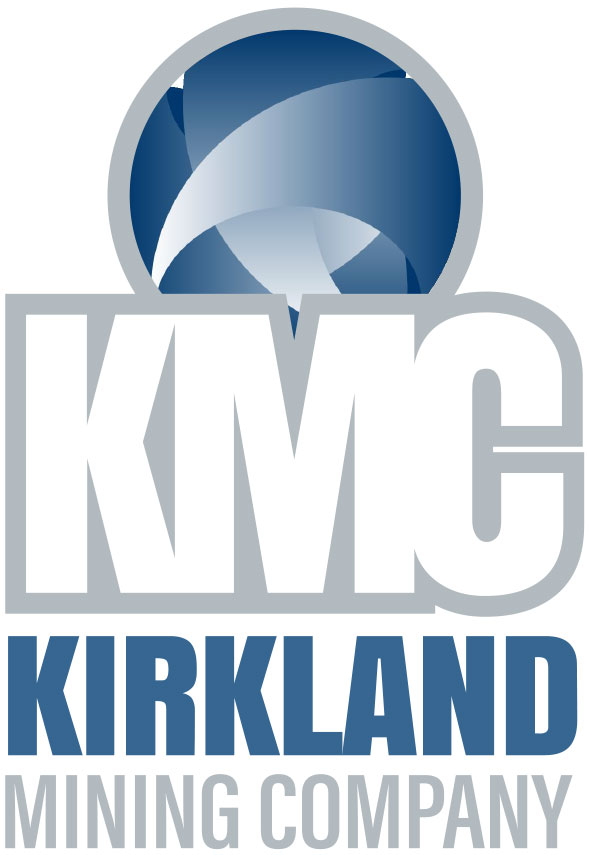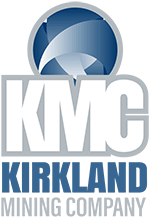Frequently Asked Questions
PROCESSES AND PERMITTING
What is the project's preliminary purpose and need?The BLM’s preliminary PURPOSE for action is to respond to Kirkland Mining Company’s Draft Mining and Reclamation Plan of Operations and provide KMC opportunity to conduct mining operations and development of associated infrastructure within its unpatented mining claims on BLM administered lands, pursuant to federal mining laws.
The BLM’s preliminary NEED for the action is established by the BLM’s responsibility under the Federal Land Policy and Management Act (FLPMA), and BLM Surface Management Regulations at 43 Code of Federal Regulations (CFR) 3809, to respond to the Draft Mining and Reclamation Plan of Operations and take action necessary to meet the performance standards in 43 CFR 3809 and prevent unnecessary or undue degradation of the subject BLM administered lands. In addition, the BLM must determine whether any occupancy of BLM administered land proposed in the Draft Mining and Reclamation Plan of Operations is in conformance with the regulations at 43 CFR 3715.
What does “Unnecessary or Undue Degradation” mean?43 CFR 3809.5 defines unnecessary or undue degradation as "conditions, activities, or practices that:
(1) Fail to comply with one or more of the following: the performance standards in § 3809.420, the terms and conditions of an approved plan of operations, operations described in a complete notice, and other Federal and state laws related to environmental protection and protection of cultural resources; (2) Are not “reasonably incident” to prospecting, mining, or processing operations as defined in § 3715.0-5 of this chapter; or (3) Fail to attain a stated level of protection or reclamation required by specific laws in areas such as the California Desert Conservation Area, Wild and Scenic Rivers, BLM-administered portions of the National Wilderness System, and BLM-administered National Monuments and National Conservation Areas." Section (3) does not apply to this project.
What is a “Reasonable Alternative”? A “reasonable alternative” relates to the proposed action and is one that is technically and economically feasible for the applicant and meets the project purpose and need. Said another way—can it be built/engineered and is it cost-effective or profitable?
What minerals are “locatable” under the Mining Law of 1872?Rather than attempting to establish what minerals are locatable, it may be more practical to discuss what minerals are not locatable.
The number of locatable minerals authorized by the 1872 Mining Law has been substantially reduced by several subsequent Federal laws. The Mineral Leasing Act of 1920, as amended, authorized that deposits of oil, gas, coal, potassium, sodium, phosphate, oil shale, native asphalt, solid and semisolid bitumen and bituminous rock … may be acquired only through a mineral leasing system.
The Materials Act of July 31, 1947 (61 Stat. 681) amended by the Act of July 23, 1955 (69 Stat. 367), excluded common varieties of sand, stone, gravel, pumice, pumicite, cinders and clay. However, uncommon varieties of sand, stone, gravel, pumice, pumicite, cinders and exceptional clay are locatable. The Act of September 28, 1962 (76 Stat. 652), removed petrified wood from the locatable mineral category.
Are there minerals that were never locatable?Even before the Materials Act of 1947, and the Act of July 23, 1955, many mineral materials were never locatable even though they could be marketed at a profit. In fact the Materials Act of 1947 was enacted to provide a means to dispose of them. Material in this category includes ordinary deposits of clay, limestone, fill material, etc. Non-locatable minerals generally have a normal quality and a value for ordinary uses.
What are “Uncommon Variety” minerals?Section 601 of Title 30 of the United States Code authorizes the Secretary of the Interior to sell “common varieties” of “sand, stone, gravel, pumice, pumicite, cinders and clay.” On July 23, 1955, Public Law 167 (69 Stat. 368; 30 USC 611) was passed to, among other things, prohibit further location of common variety minerals. The Act stated in part:
No deposit of common varieties of sand, stone, gravel, pumice, pumicite, or cinders and no deposit of petrified wood shall be deemed a valuable mineral deposit within the meaning of the mining laws of the United States so as to give effective validity to any mining claim hereafter located under such mining laws.
However, the Act went on to provide for an exception for “uncommon variety” minerals at 30 USC 611: “Common varieties” as used in Sections 601, 603, and 611 to 615 of this title does not include deposits of such materials which are valuable because the deposit has some property giving it distinct and special value and does not include so-called “block pumice” which occurs in nature in pieces having one dimension of two inches or more.
Therefore, “uncommon varieties” of such materials are locatable under the Mining Law of 1872. Uncommon varieties are “valuable because the deposit has some property giving it distinct and special value....”
How Does BLM determine a mineral is an “Uncommon Variety?”The BLM conducts a common variety determination and prepares a mineral report. A mineral report is generally the factual basis for a management determination. A number of legal decisions have formulated and refined the tests used to determine whether a particular deposit is an uncommon variety. These tests are as follows:
(1) there must be a comparison of the mineral deposit in question with other deposits of such minerals generally;
(2) the mineral deposit in question must have a unique property;
(3) the unique property must give the deposit a distinct and special value;
(4) if the special value is for uses to which ordinary varieties of the mineral are put, the deposit must have some distinct and special value for such use;
(5) and the distinct and special value must be reflected by the higher price which the material commands in the marketplace ... [or by] reduced costs or overhead so that the profit to the producer [is] substantially more.
MINING OPERATIONS
What types of permits will be required by Yavapai County?The mine is on federal land and not subject to Yavapai County jurisdiction. KMC’s private land associated with the mine that will be used in conjunction with the mining operation is exempt from County planning and zoning regulations by virtue of state law.
Will the addition of trucks on Iron Springs Road require any permit from the Yavapai County Public Works Department?We do not currently anticipate the need for any additional road improvements based on projected truck traffic on Iron Springs Road. Kirkland and the BLM will consult with the Yavapai County Public Works Department to assess the effects of the increased traffic on county roads adjacent to the project. The traffic impact analysis, currently underway, would include information from historic and current traffic counts and assess the physical effects on the roads and road shoulders from weighted trucks. This traffic study will help determine signage requirements and any modifications that may be needed to the road shoulder at the mine site entry point to ensure integrity of the Iron Springs Road surface.
NATURAL POZZOLANS
Is the material being proposed for mining ‘carcinogenic?’The primary material being mined is a tuff composed of volcanic ash and pumice. Even though this material has a high silica content, the silica is non-crystalline and is not listed as a ‘carcinogen’ by the International Agency on Cancer Research. Only crystalline silica (for example quartz sand) when it is ground finely enough to be respirable is listed as a carcinogen. This operation has much less potential for the presence of crystalline silica, such as quartz sand, than most mines or quarries in silicate rocks, but the same dust control measures established for sand and gravel operations, quarries, and mines with higher potential crystalline silica will still be applied to this mine. Tests for other airborne carcinogens other than respirable crystalline silica are currently being performed and the results of those tests will be posted to the website as they become available, potentially by the end of 2017.
Is natural pozzolan dust a danger to my health?Our natural pozzolan is an amorphous aluminum silicate, as opposed to a crystalline silica. While crystalline silica dust is a known hazard to human health, amorphous silica has been classified as only a nuisance dust by the various regulatory agencies in the country and around the world.
Even though the dust from natural pozzolan mining is not considered a health hazard, various state and federal regulations ensure that any mining company, including KMC, mitigate the amount of dust produced during their mining operations. There will be a program designed specifically to control dust on the KMC property in accordance with the previously mentioned regulations. Furthermore, while opponents of the mine have regularly claimed that the mine contains erionite, the claim has no basis in fact. Across five different studies, all analyses of the KMC materials by independent EPA certified labs have shown in fact no evidence of erionite in the KMC mineral deposit whatsoever.
Fly ash has been used as a pozzolan for years; why start mining natural pozzolan now?For a detailed explanation, see the ABOUT NATURAL POZZOLANS page of this site. The short answer is this: the supply of high quality fly ash, a “man-made” pozzolan of the quality usable in concrete infrastructure, is not keeping pace with demand. Furthermore, this gap is widening as pozzolan demand grows and usable fly ash supply is shrinking. This situation has already adversely affected numerous projects around the country and is driving a resurgence in natural pozzolan demand.
Natural Pozzolans are located all over the state and the US; why start mining the Kirkland deposit again?While it is true that mother nature has deposited many different types of mineral throughout Arizona and the US, very few deposits like the Kirkland HQP have been identified in this area. Its unique chemistry and morphology (physical shape and makeup) make its performance in concrete competitive with, and often better than, the highest quality fly ashes and natural pozzolans currently in the market. Additionally, its relative proximity to several large end-use markets makes its development economically and logistically feasible. This is not the case for many deposits located in very isolated areas. While the increasing need for natural pozzolans will undoubtedly spur development of other sources around the country, only a small handful of high quality deposits in the US are currently permitted or even at KMC’s stage in the permitting process. Even as new sources are developed, we are very confident that the KMC HQP’s unique quality will continue to make it a premium-grade product amongst its competitors.
BUSINESS / GENERAL
What are the benefits of reopening the Kirkland Mine?This question is addressed extensively—detailing the local, state, national and global benefits—on the BENEFITS page of this site. In short, KMC believes there are significant local opportunities for employment, contributions to the tax base and further additions to the local economy. Additionally, the unique ability of this natural mineral to significantly improve the environmental impact of concrete, the most widely used material in the world, has a generational capacity to improve the local, national and even global environmental landscape.
Would Kirkland Mining Company pay property taxes?Not on the mining claims administered by BLM. The 76-acre mine site is located on public land and is not subject to property taxes. For information on how counties receive payments from the federal government because public lands are not subject to property taxes, search the internet on “Payment in Lieu of Taxes.” All Kirkland Mining Company activities on its private property and off-site would be subject to applicable property/sales/fuel taxes.
Has KMC entered into any processing or purchase agreements for its HQP?While the company has multiple options for the processing and sale of its pozzolan material, to date, KMC has not entered into any agreements with any companies with respect to the HQP from the Kirkland Mine.

